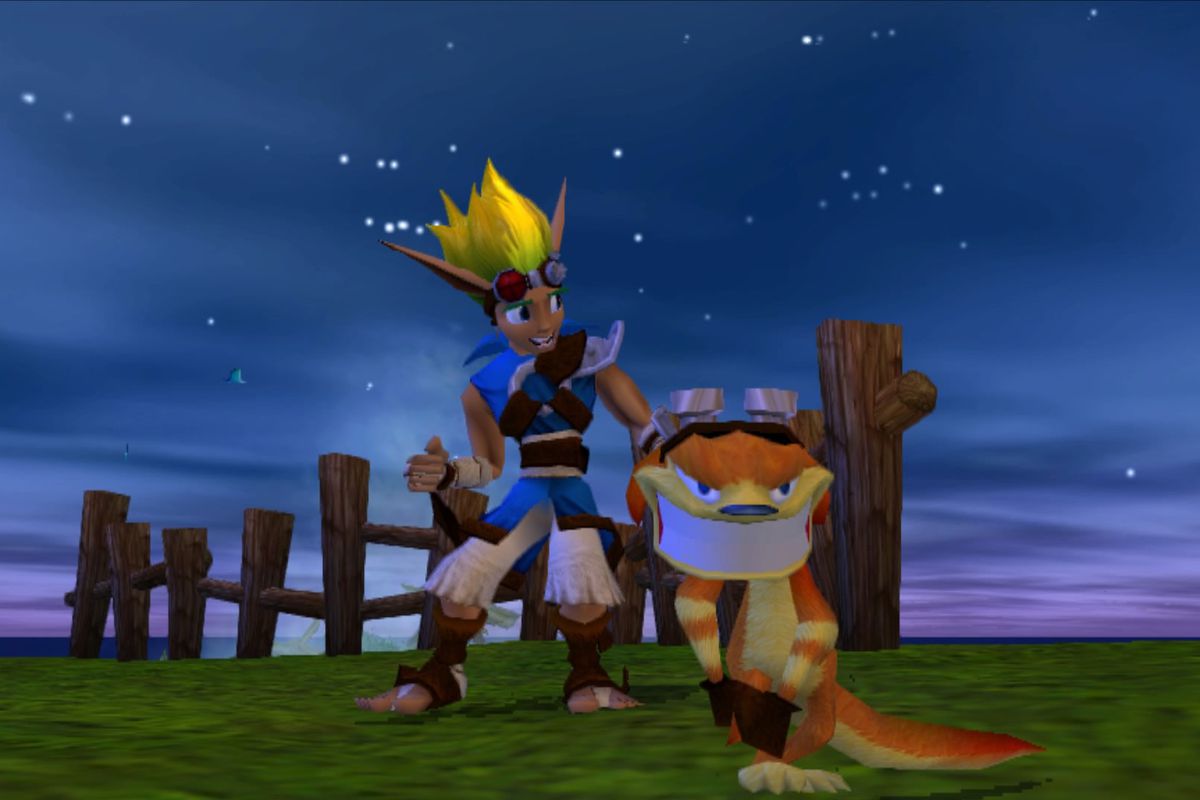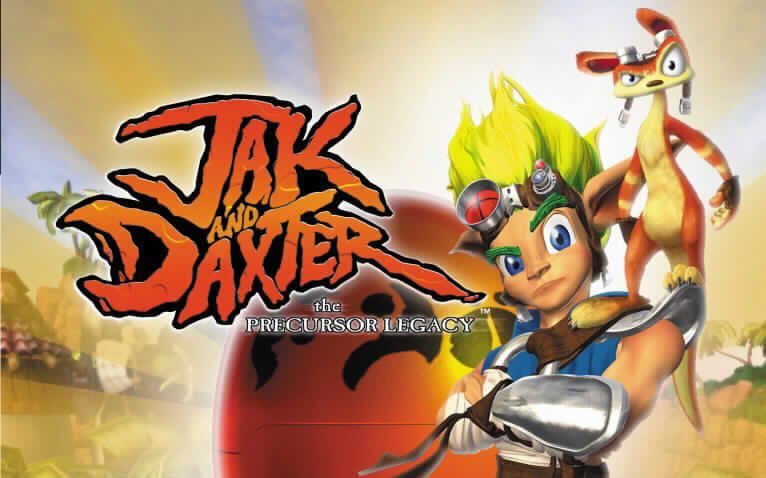I always admired Jak and Daxter from afar, even as a child. However, as a child, my options of games were limited throughout the year, and when I did get the chance it was usually Crash Bandicoot or Spyro that I turned to rather than Jak and Daxter. Since maturing though, I obviously have had a chance to revisit some games from the past, and one of them was Jak and Daxter: The Precursor Legacy. So, what did I think all these years later?
Story –
Jak and Daxter: The Precursor Legacy follows Jak and Daxter. They were caught in the midst of stalking on Mirage Island and ended up in an accident in which Jak accidentally pushes Daxter into a pot of dark eco, turning him into a ferret-type-thing. As you can probably imagine, Daxter wants to be turned back to his old human self. This is where the duo set out on a mission to collect power-cells and travel across the world in an attempt to try and manage to convert Daxter back to his old self before Daxter realising he would have to sacrifices his chances to ever become his old self again for the sake of the world.

The story of Jak and Daxter is nothing special, but then again, nor was many games in the Playstation 2 era. However, it does suffice. The story is mainly brought alive by the expressive characters and voice acting performances that give off that butterfly feeling of being a child and loading up a new game for the first time.
Game-Play –
Jak and Daxter follows similar feedback game-play loops to a lot of 3D platformers like Spyro and Super Mario 64 in the late 90s and early 2000s. The game has a lot of counters, for the player to keep track of what power cells they haven’t gotten yet, as well as what precursor orbs they haven’t got. The game is nothing deep or complex, and missions and collectables are pretty easy to figure out. Despite this, it is incredibly satisfying every time you get a new power cell, giving off that same feeling you’d get when getting stars in Super Mario 64 all those years ago. However, just like Mario 64, there is plenty of levels and power-cells that grind the gears, with some of the checkpoints being nothing short of completely ridiculous.

The world feels alive, and large. There is very few loading screens and transition from area to area feels very natural. A big part of the game-play in this game for me was actually becoming immersed in what I was doing at a given point in time. This lack of loading and breaking the immersion is something that helped me in going through large spaces of time of continuous play. It is genuinely quite impressive how fluid and connected the world is for this era of gaming.
Visuals and Graphics –
Visually Jak and Daxter is obviously quite aged. Admittedly I should have played the HD version of the games on PS4, but I wanted that authentic PS2 experience. Despite ageing, these games have such a vibrant and atmospheric charm to them that it is hard to not feel impressed. Even with the aged resolution, there is a lot to be in awe by.

Once again, the world is impressively connected, and the characters are impressively animated. This can be seen especially in Daxter, whose face and mouth movements bring him to life, and his dancing whenever you get a power cell makes it feel like these aren’t just hollow bodies, and are actual characters that you could get to know.

The game has aged, but the charm is still all there for you to take in, and that is what is a big draw in for a lot of people returning to these old and classic games from this era.
Conclusion –
Jak and Daxter is really one of the best games on the PS2. It takes a lot for an old game to maintain my interest, or any game really, yet Jak and Daxter: The Precursor Legacy manages to do that. It is a game with a lot of charm, world-building and simple, yet addictive game-play loops that feel similar to that of the stars in Super Mario 64.
Final Score – 7.5/10
